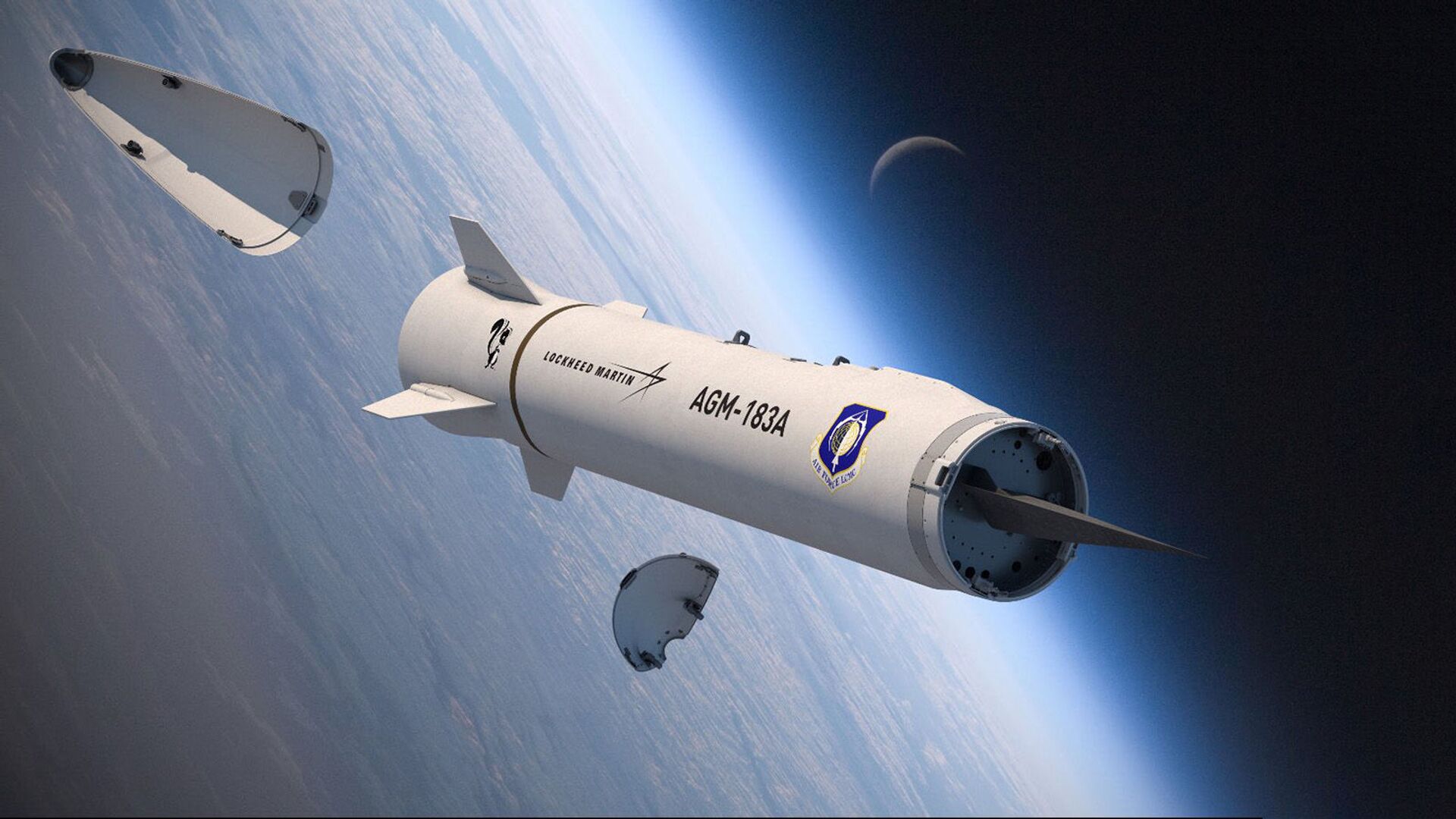https://sputnikglobe.com/20230310/ex-pentagon-officer-us-still-playing-catchup-with-hypersonics-after-underestimating-china-russia-1108276015.html
Ex-Pentagon Officer: US ‘Still Playing Catchup’ With Hypersonics After Underestimating China, Russia
Ex-Pentagon Officer: US ‘Still Playing Catchup’ With Hypersonics After Underestimating China, Russia
Sputnik International
Hypersonic weapons travel more than 5 times the speed of sound and are feared because their speed and maneuverability are unequaled and nigh-impossible to... 10.03.2023, Sputnik International
2023-03-10T22:28+0000
2023-03-10T22:28+0000
2023-03-10T22:27+0000
analysis
hypersonic weapons
iran
anti-ballistic missile (abm) treaty
https://cdn1.img.sputnikglobe.com/img/07e4/0a/0e/1080770774_0:0:1600:900_1920x0_80_0_0_b030c728462858a6ff626c753fcded15.jpg
Iran revealed earlier this week it had developed a precision strike missile able to hit moving targets at a range of more than 1,000 miles and at a speed of 8 times the speed of sound - making it a hypersonic missile. This follows an announcement in November that the Islamic Republic had developed a hypersonic weapon, and another last month about an ultra-long-range cruise missile that might have been the same announced on Tuesday.Deploying such missiles requires a great deal of technical know-how and capability regarding cruise and ballistic missiles, such that only a handful of nations have the advanced weapons. While China and Russia have both deployed hypersonic weapons with their armed forces and the latter has even used them in combat, the US and North Korea have claimed at least one successful test of a hypersonic weapon. South Korea has revealed a prototype weapon, but it has never been fired.While during the 1990s, Russia and the US dismantled large numbers of nuclear warheads, by 2002, the US had unilaterally pulled out of the Anti-Ballistic Missile (ABM) Treaty with little explanation as to why. The treaty had banned most ballistic missile interceptors, aside from two clusters around the capital city and around a nuclear “missile farm” launch base, because it was feared that if a nation built so many interceptors it believed it could evade an enemy’s nuclear attack, it would become more likely to try and launch its own.Russia responded to this threat by reviving its 1980s-era research into hypersonic flight to develop a new generation of missiles that could evade any US missile shield.“Both of these factors caused the US not to prioritize hypersonic weapon development following some early failures at the end of the Cold War. The US has also had a surprising number of failures in its development of hypersonic weapons, so we are still playing catch up with Russia and China right now.”
https://sputnikglobe.com/20230310/us-has-no-intention-of-developing-hypersonic-nuclear-weapons-top-military-officials-say-1108267612.html
iran
Sputnik International
feedback@sputniknews.com
+74956456601
MIA „Rossiya Segodnya“
2023
News
en_EN
Sputnik International
feedback@sputniknews.com
+74956456601
MIA „Rossiya Segodnya“
Sputnik International
feedback@sputniknews.com
+74956456601
MIA „Rossiya Segodnya“
us, china, russia, pentagon, us department of defense, hypersonics
us, china, russia, pentagon, us department of defense, hypersonics
Ex-Pentagon Officer: US ‘Still Playing Catchup’ With Hypersonics After Underestimating China, Russia
Hypersonic weapons travel more than 5 times the speed of sound and are feared because their speed and maneuverability are unequaled and nigh-impossible to track or shoot down using existing interception techniques.
Iran revealed earlier this week it had developed a
precision strike missile able to hit moving targets at a range of more than 1,000 miles and at a speed of 8 times the speed of sound - making it a hypersonic missile. This follows an
announcement in November that the Islamic Republic had developed a hypersonic weapon, and another last month about an
ultra-long-range cruise missile that might have been the same announced on Tuesday.
The long-range missile has been dubbed a “carrier-killer,” and could turn the entire Arabian Sea into a no-go zone for US aircraft carriers in the event of hostilities between the two nations.
Deploying such missiles requires a great deal of technical know-how and capability regarding cruise and ballistic missiles, such that only a handful of nations have the advanced weapons. While China and Russia have both deployed hypersonic weapons with their armed forces and the latter has even
used them in combat, the US and North Korea have
claimed at least one successful test of a hypersonic weapon. South Korea has revealed a prototype weapon, but it has never been fired.
David T. Pyne, an Electromagnetic Pulse (EMP) Task Force scholar and former US Department of Defenсe officer, told Sputnik the US has fallen behind Russia and China in this field because “after the fall of the Soviet Union and the First Iraq War, the US believed that it was well ahead of Russia and China in terms of military technology and believed that with the collapse of the Soviet Union, Russia no longer posed an existential threat to the US because it seemed to lack aggressive intentions.”
While during the 1990s, Russia and the US
dismantled large numbers of nuclear warheads, by 2002, the US had unilaterally pulled out of the Anti-Ballistic Missile (ABM) Treaty with little explanation as to why. The treaty had banned most ballistic missile interceptors, aside from two clusters around the capital city and around a nuclear “missile farm” launch base, because it was feared that if a nation built so many interceptors it believed it could evade an enemy’s nuclear attack, it would become more likely to try and launch its own.
Russia responded to this threat by
reviving its 1980s-era research into hypersonic flight to develop a new generation of missiles that could evade any US missile shield.
“In addition, the Global War on Terror which lasted over two decades, changed the focus of the US from ‘great power competition’ and matching Russia’s and China’s nuclear missile buildup and modernization programs to fighting no-win counterinsurgency wars in the Middle East against non-state or state backed terrorist actors that posed us little threat,” Pyne said.
“Both of these factors caused the US not to prioritize hypersonic weapon development following some early failures at the end of the Cold War. The US has also had a surprising number of failures in its development of hypersonic weapons, so we are still playing catch up with Russia and China right now.”



